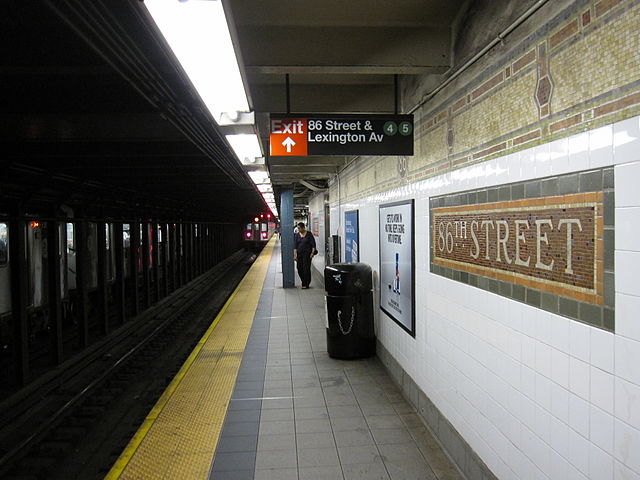Smell Ya Later

Ever since the September 11th attacks, much of the United States has taken a proactive approach toward terrorism. New York City, a focal point on 9/11, is no exception. The city has run numerous drills and tests in the decade plus since the World Trade Center collapsed. The goals of these exercises is to prevent or limit the damage done from future terrorism attempts, as one would expect. To accomplish that goal, though, some tests can’t happen in a way that would alert the people nearby to what’s going on. For example, if you were on the city’s subways on July 9th of this year, you may have been walking through one such experiment — and at the time, had no idea.
New York’s subways are potentially susceptible to a chemical attack. A would-be evil-doer could, in theory, release poisonous or otherwise harmful gas on a train or within a subway station, harming everyone who passed through these mostly-enclosed thoroughfares. And where that gas goes is anyone’s guess, which is exactly the problem. Toxic gas could spread in a large number of different directions, and figuring that out after the fact is too hard, too late. So, with a $3.4 million grant from the U.S. Department of Homeland Security, the New York Police Department decided to launch a chemical attack of its own. A fake, most likely safe one, that is.
According to a report by WNYC, the NYPD and federal researchers “released a nontoxic gas through 21 subway lines as part of a plan to monitor air flows.” That odorless, colorless gas, called perfluorocarbon tracers (PFTs), were detected by air samples which the police placed inside the stations and on street level throughout the monitored area. With this data, the relevant government agencies can plot where toxins from actual attacks (or accidental chemical spills) may end up, and respond in kind. (Of course, the agencies won’t be releasing the data to the public.) The Verge noted that New York wasn’t unique in this regard, either — Boston, Washington, and London all had performed or were planning on performing similar (albeit smaller-scale) airflow tests as well.
As for the tracer itself, it’s probably harmless. NYPD commissioner Raymond Kelly was quoted in the New York Times, saying that PFTs are “used to inflate babies’ lungs.” The tracers are also used in medical imaging and eye surgeries. But more importantly, PFTs may be the only even remotely safe type of tracer available. In a separate article, WNYC spoke with Paul Kalb, a researcher who assisted the NYPD with their test. Kalb told WNYC that even extraordinarily tiny amounts of PFTs can be tracked by the air collection units, and the only other materials that we can say the same thing about are unfortunately radioactive — and inherently dangerous.
Not all were convinced that the test was either safe or necessary. Upon getting wind of the tests, a group of people distributed fake NYPD flyers claiming that PFTs were linked to early menopause and various other maladies. But Kalb easily dispensed with such concerns. He pointed out that even if it turned out that even if the scientific evidence suggesting that PFTs were safe was wrong, the air one breathes regularly while walking around Manhattan is likely much, much worse.
Bonus fact: Another use of PFTs: tracking down kidnappers. In 1999, a New York-area lab ran a federally-funded test to see if ransom money paid to kidnappers could be tainted with the odorless, colorless gas, and then be used as part of “the surreptitious detection of the location of such money [which] will enable the earlier (and more likely, safer) retrieval of kidnapping victims,” per this pdf. The company added PFTs to ransom money which was used to pay off kidnappers of a wealthy newspaper publisher’s son in Mexico. The plan worked: authorities sent PFT detectors to roughly a half-dozen areas where they believed the suspects could be hiding, with success, as the devices found the gas at one of the locations. Ultimately, the PFT-tainted money helped authorities in tracking down the kidnappers and recovering the full ransom.
From the Archives: The Nose Knows: How Disney’s theme parks use your nose to guide you to places to spend money.
Related: “The Best Things to Do in New York, Second Edition: 1001 Ideas” by Caitlin Leffel and Jacob Lehman. 4.3 stars on 21 reviews, and for some reason, comes up when you search Amazon for “New York City Subway Evacuation Plan.”
